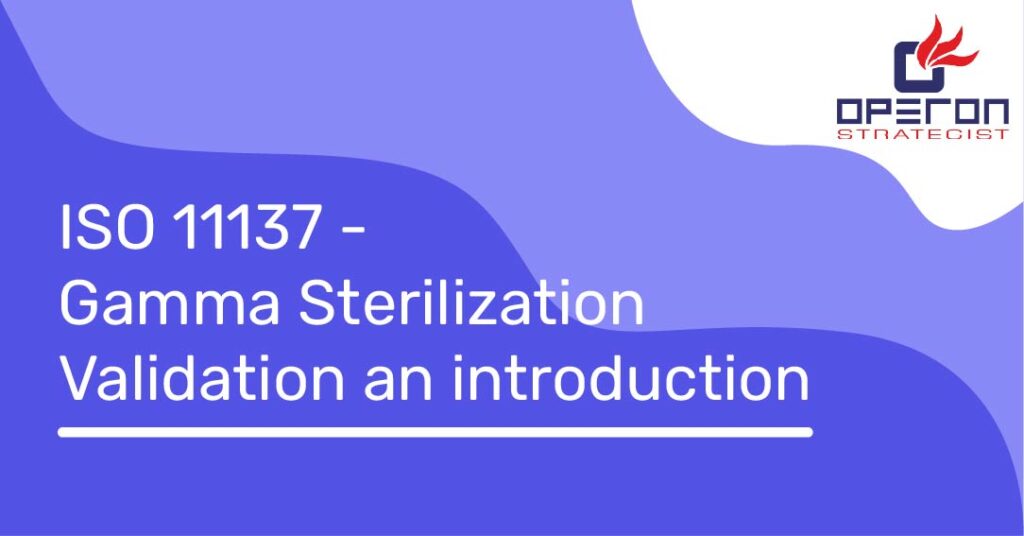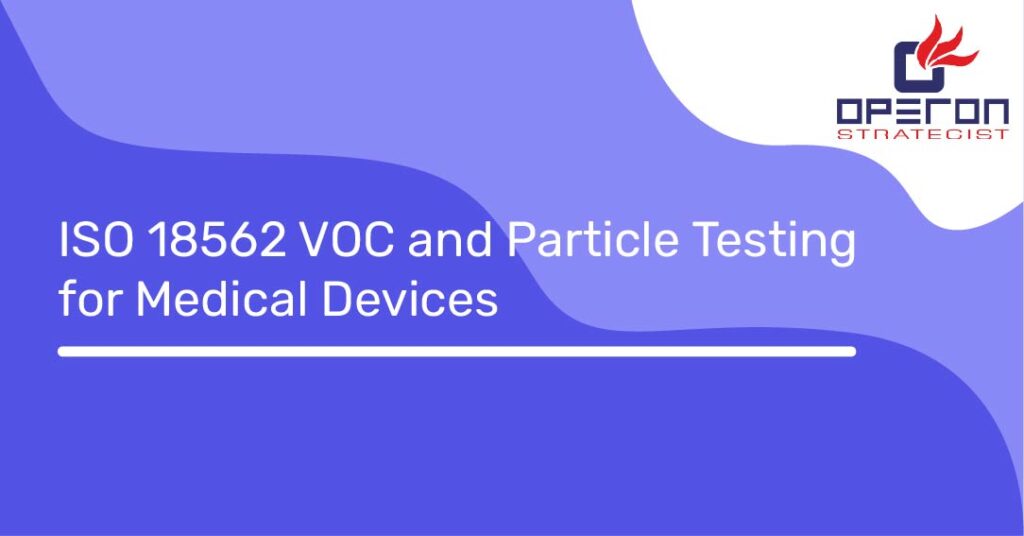ISO 11137 – Gamma Sterilization Validation an introduction
Sterilization is one of the final challenges that many medical device manufacturers must overcome before their product may be launched. However, this does not mean that it may (or should) be handled as an addition. Patients and users are at danger from unsterilized or inadequately sterilized equipment.
Luckily, there are various notable techniques for cleaning clinical gadgets. This article, explicitly, will cover gamma illumination as a sanitization technique and its specialist ISO standard, ISO 11137.
- Operon strategist is ISO 13485 consultant who helps to create the document for ISO 13485 certificate. For more details on ISO 13485 certificate process Contact Us Or WhatsApp Us
What is ISO 11137?
The international standard ISO 11137 governs the use of radiation to sterilise healthcare products. It\’s divided into three sections, each of which covers a different aspect of medical device radiation sterilisation:
ISO 11137-1: The requirements for establishing, validating, and controlling the radiation sterilisation process are covered in part one of the standard. It includes instructions for sterilising using the radionuclides Cobalt 60 and Cesium 137, which are the two most often utilised gamma emitting isotopes.
ISO 11137-2: The second part of the standard covers the process that manufacturers will use to establish the minimal dose required to achieve sterility. It also specifies the process for substantiating the sterilising dose of 25 or 15 kiloGrays (kGy). The gamma rays that are emitted as the radionuclide decays are measured in kiloGrays.
ISO 11137-3: Section 3 of the standard provides manufacturers with information on how to achieve the standards of part one, which pertain to dosimetry (the measurement of gamma ray dose) and its role in planning, validating, and managing the sterilizing process.
How does Gamma sterilization of medical device work?
One of the most frequent methods of sterilizing medical devices is gamma irradiation. Gamma rays, like X-rays, are a kind of electromagnetic radiation. Gamma rays, on the other hand, have a considerably higher energy and may penetrate materials like plastic to kill bacteria on previously packaged equipment. The radiation source (typically Cobalt 60, but sometimes Caesium 137) is placed in a radiation-shielded room to begin the sterilising procedure. Packaged medical devices are then brought in and circulated around the source of radiation so that all sides of the product are exposed to the gamma rays.
Gamma irradiation, unlike other sterilising procedures such as ethylene oxide (EO), does not require specific humidity, temperature, or pressure controls. The gamma sterilisation technique also doesn\’t raise the temperature of the objects being sterilised, making it excellent for heat-sensitive gadgets. It\’s worth noting that the future supply of the required isotopes is unknown. Because the global supply of cobalt-60 is currently insufficient to keep up with the rate of decay, the capacity of gamma irradiation facilities is limited.
Operon Strategist is a medical device consulting companies which provides regulatory guidance to various manufacturers in the healthcare industry to ensure the strategic development of these manufacturers.
What is the interaction for Gamma Sterilization Validation as per ISO 11137?
The gamma disinfection approval process framed in ISO 11137 is intended to guarantee two basic results:
- The desired Sterilization Assurance Level (SAL) is met using a minimum dose of radiation. The most regularly indicated SAL is 10-6, or one possibly unsterilized gadget for each million.
- Product functionality is not compromised by exceeding a maximum dose of radiation. A maximum dose must be established and not exceeded during gamma sterilization because gamma rays have the potential to break down the polymer that are used in many single-use medical devices that require sterilization.
ISO 11137-2 specifies three methods for determining a radiation dosage that satisfies both of these criteria. The first two methods are similar in that they include determining the natural bio burden—the quantity of germs on a product—and sterility testing to confirm the proper dose.
These procedures are intended for usage with large-batch items that require at least 100 units of the product. When grouping hundreds of devices together is not possible, the third method, known as VDmax, is utilised for items created in smaller batches. This approach evaluates a predetermined dose: either 25 kGy or 15 kGy for items with a lesser tolerance for gamma rays, rather than finding the minimum dose required to attain SAL 10-6. Manufacturers must execute quarterly dosage audits as part of continuing process validation, regardless of the method utilized, according to ISO 11137.

-
Operon Strategisthttps://operonstrategist.com/author/snehal/
-
Operon Strategisthttps://operonstrategist.com/author/snehal/
-
Operon Strategisthttps://operonstrategist.com/author/snehal/
-
Operon Strategisthttps://operonstrategist.com/author/snehal/





